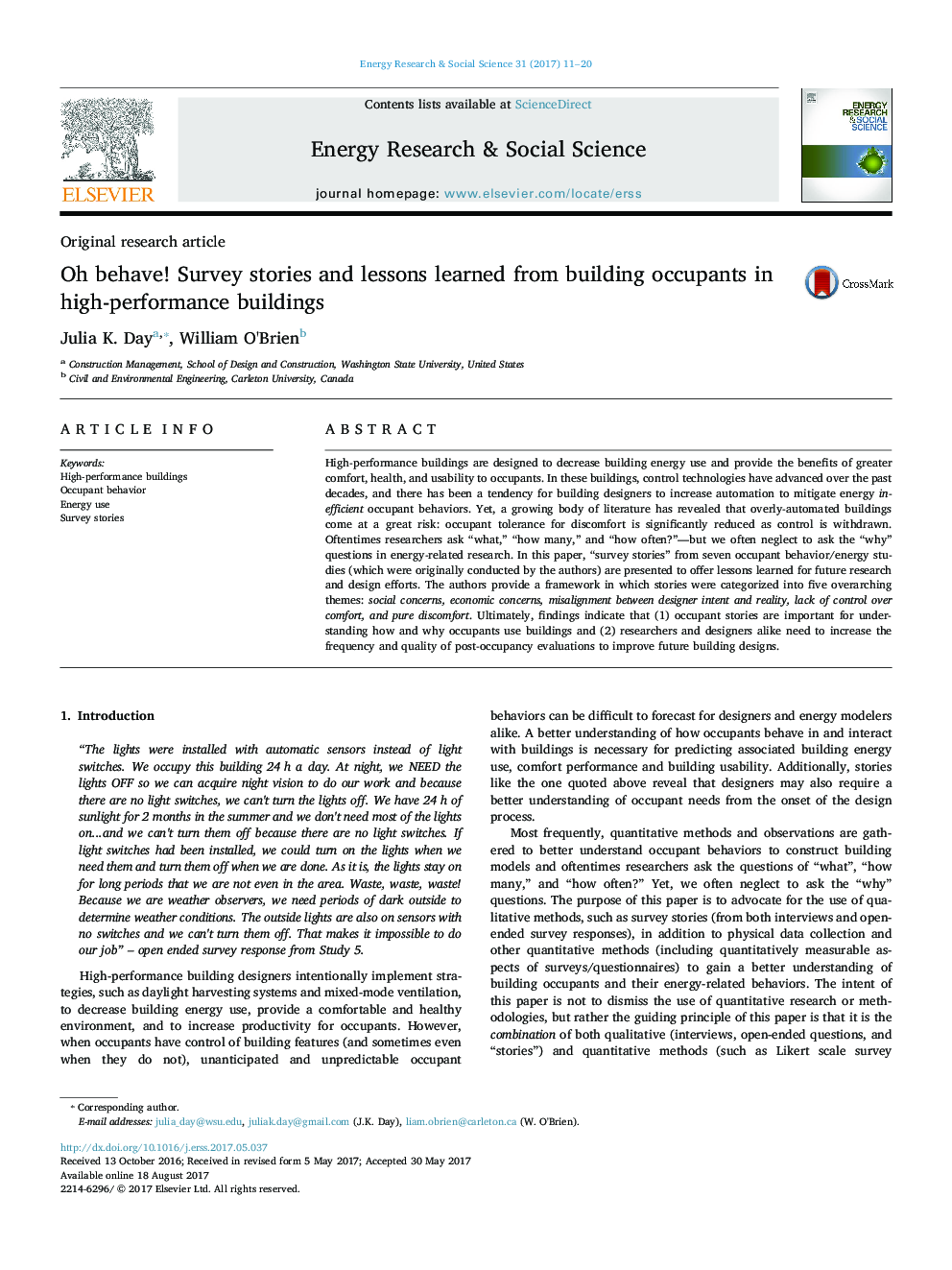| Article ID | Journal | Published Year | Pages | File Type |
|---|---|---|---|---|
| 6463828 | Energy Research & Social Science | 2017 | 10 Pages |
High-performance buildings are designed to decrease building energy use and provide the benefits of greater comfort, health, and usability to occupants. In these buildings, control technologies have advanced over the past decades, and there has been a tendency for building designers to increase automation to mitigate energy inefficient occupant behaviors. Yet, a growing body of literature has revealed that overly-automated buildings come at a great risk: occupant tolerance for discomfort is significantly reduced as control is withdrawn. Oftentimes researchers ask “what,” “how many,” and “how often?”-but we often neglect to ask the “why” questions in energy-related research. In this paper, “survey stories” from seven occupant behavior/energy studies (which were originally conducted by the authors) are presented to offer lessons learned for future research and design efforts. The authors provide a framework in which stories were categorized into five overarching themes: social concerns, economic concerns, misalignment between designer intent and reality, lack of control over comfort, and pure discomfort. Ultimately, findings indicate that (1) occupant stories are important for understanding how and why occupants use buildings and (2) researchers and designers alike need to increase the frequency and quality of post-occupancy evaluations to improve future building designs.
